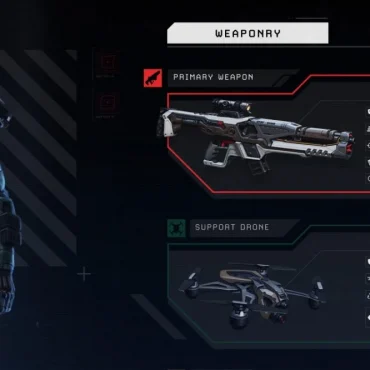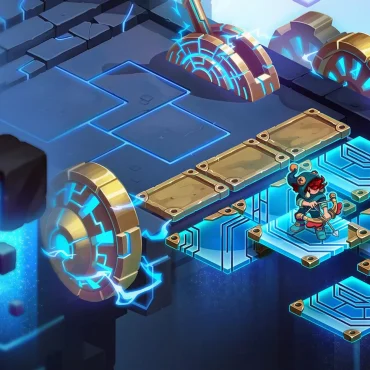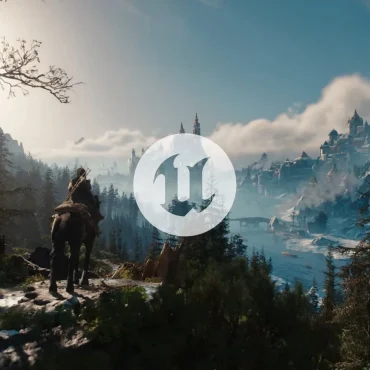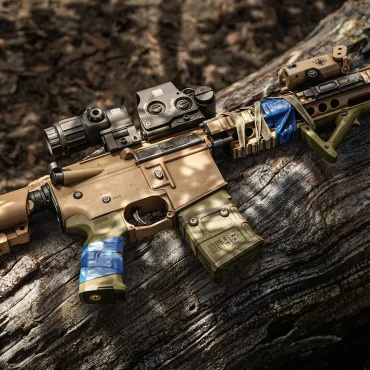Today’s games are bigger, more complex, and more visually ambitious than ever, which means art production needs have scaled dramatically. For many studios, especially those juggling tight schedules or multiple platforms, building everything in-house just isn’t practical. That’s why video game art outsourcing has become a core part of modern development pipelines.
Outsourcing game art means partnering with external talent (individual artists or a game art outsourcing studio) to create artwork for your game. It’s a common practice used by indie developers and AAA studios alike to get high-quality art while optimizing cost and time.
In this guide, we’ll walk you through how to outsource game art effectively, covering tips on choosing the right partner, what to prepare beforehand, how the process works on both ends, and what to expect along the way.
Why outsource game art?
Outsourcing game art offers several benefits that can significantly impact your project’s success:
- Cost efficiency: Outsourcing cuts costs by avoiding full-time hires and overhead. Studios in lower-cost regions deliver high-quality work at budget-friendly rates.
- Access to talent: Tap into a global pool of specialized artists. A game art outsourcing studio can match you with niche talent (like sci-fi concept artists or realistic 3D modelers) on demand.
- Flexibility & scalability: Outsourcing lets you scale art production up or down easily. Add artists during crunch time, then scale back when the load lightens.
- Focus on core development: Let external artists handle visuals while your in-house team focuses on gameplay, mechanics, and core development tasks.
- Faster content production: Outsourced teams can work alongside yours to speed up asset creation — ideal when content needs grow or deadlines tighten.
In short, art outsourcing services allow you to get high-quality art assets efficiently, leveraging external resources to save time and money while maintaining quality. Now, let’s look at how to outsource game art and how to set yourself up for efficient cooperation.
What to prepare before outsourcing game art
Outsourcing is not a plug-and-play magic solution — preparation on your end is key to a smooth collaboration. Before you even contact an outsourcing partner, make sure to have the following in place:
- Legal and IP preparedness:
Protecting your game’s intellectual property is important. Plan to sign a Non-Disclosure Agreement (NDA) with any outsourcing partner before sharing detailed project information. Reputable partners will expect this formality — it protects both sides. Also, be ready to discuss how intellectual property rights will be handled in the contract (generally, you should retain full ownership of the art created for your game once paid for). Having your own lawyer-reviewed contract or key points prepared can speed up the onboarding process. - Clear art style or vision:
Be ready to communicate the look and feel of your game. If you have a Game Design Document (GDD) or any concept art, share it. Create a style guide that outlines your art style’s do’s and don’ts, color schemes, lighting, mood, and any existing examples of the quality bar. Thorough art guidelines are a must-have to convey your game’s visual direction. The game art outsourcing studio will use these to match your expectations.
If you’re still developing your style, many game art outsourcing studios can also support you with Art Direction, guiding the overall visual consistency and ensuring that all assets — from characters to environments — adhere to a unified look. They can also help establish moodboards, review internal work, and make high-level stylistic decisions that align with your gameplay and narrative. - Detailed asset list and requirements:
Identify exactly what art assets you need to outsource. Break it down into a list: characters, environments, props, UI elements, animations, etc. For each asset, note the specifications — polycount or resolution, style notes, animations needed, file format, engine requirements, and so on. The more detail you provide upfront, the less guesswork later. You’ll get faster and more precise quotes and results. - Benchmark assets (if available):
If you’ve already developed some art assets internally or have prior artwork, provide them as benchmarks. A handful of polished reference assets created in-house can set the quality bar for the outsourcing team. It also helps to test and finalize your content pipeline before involving a third party. - Timeline and milestones:
Define your ideal timeline for deliverables. When do you need each asset or batch of assets? It’s crucial to have a schedule in mind, but also be prepared to discuss realism with your partner. An honest outsourcing studio will let you know if your deadlines are achievable. Determine if there are any critical milestones (e.g., a demo or investor presentation) that require assets by a certain date. - Budget and payment plan:
Have a budget range for the art portion of your project. Different studios and freelancers can vary widely in price. Know whether you prefer a fixed price per asset, hourly rates, or a retainer model. This will help in discussions with potential partners. Remember, the cheapest quote isn’t always the best — you’re looking for value and reliability, not just cost. Be clear about your budget from the outset and ensure any studio’s rates align with it.
Essentially, you want to approach an art outsourcing services partner with a clear blueprint of what you need and expect. This not only helps the outsourcing team give you an accurate proposal but also saves you time, money, and potential headaches down the line.

How the game art outsourcing process works
Every collaboration can be slightly different, but most outsourcing game art projects follow a similar lifecycle. Here’s how the process typically looks, and what to expect at each stage:
1. Initial contact and NDA
After choosing a studio, you’ll reach out (or they might reach out to you if you submitted a query). The first order of business is usually signing a Non-Disclosure Agreement so both parties can freely discuss the project.
2. Requirement discussion & quote
Next comes a deep-dive discussion of your needs. You’ll provide the asset list, style guide, concept art, and explain the game’s vision in detail. Expect the outsourcing team to ask a lot of questions — a good partner will want to fully understand your requirements before starting. They might also offer suggestions or flag any potential issues (for example, suggesting a different format for an asset, or noticing if your timeline expectations need adjustment). Based on these talks, the studio will prepare a quote or proposal. This will outline the scope of work, timelines/milestones, and cost. It might come as a formal document or email. Review it carefully and make sure it aligns with what was discussed.
3. Contract & agreement
Once you’re happy with the proposal, it’s time to formalize the deal. The studio will usually send a contract that covers all important details: the scope of work (what assets are to be created), delivery schedule/milestones, payment terms (e.g., 30% upfront and the rest upon milestones or completion), confidentiality and IP ownership, revision policy, and any other terms. Read the contract thoroughly. Ensure it clearly states that you will own the artwork produced and that the content is original. The contract should also specify how revisions are handled — e.g., two rounds of revisions included per asset — and how disputes or changes in scope will be managed. This document is your safety net. When both parties sign, you’re officially in business.
4. Kickoff & onboarding
You’ll typically have a kickoff meeting (via call or video) with the key team members, such as the art lead/producer on their side and your project lead. In this meeting, you’ll review the plan and make sure everyone’s on the same page. It’s a great time to establish communication norms (how often to check in, via what channels) and reiterate the vision one more time. Make sure the outsourcing team has access to all necessary materials and tools at this stage. For example, if you use a shared Trello board or Slack channel, set those up and invite them. If there’s a specific file structure or repository for delivering assets, give them access and explain it. Essentially, treat them as an extension of your team from day one — get them synced into your workflow.
Also, be prepared that it can take a little time for the studio to get fully up to speed. They may need a few days to allocate the right artists and brief them internally. In fact, ramping up a team can take a couple of weeks, depending on the project size. Anticipate a brief onboarding period where the external artists familiarize themselves with your style and pipeline. During this time, they might produce one or two test assets or style frames just to ensure they’ve got the style right.
5. Production & iteration
Typically, the work is divided into milestones or batches. For example, the first milestone might be concept sketches for characters, or a couple of 3D models to lock down the style. Later milestones deliver larger batches once the style is approved. Expect the studio to deliver work in progress (WIP) for your review regularly. In game art, a common workflow is phase-wise delivery: e.g., first a sketch or graybox model, then a refined version, then the final textured render. This allows you to give feedback at multiple stages. Communication is key here — you should have a process to exchange feedback, whether it’s through emails with notes, comments on a Trello card, or live review meetings.
During production, be prepared to give prompt and clear feedback. If something isn’t right, speak up early. Maybe the anatomy on a character sketch feels off, or the color palette isn’t what you envisioned — let them know in the first iteration. It’s much easier to adjust earlier in the process than after the asset is fully finished.
Over the course of the project, the feedback loop should ideally become smoother. As the outsourcing artists learn your preferences, the amount of feedback and revisions needed often decreases. In fact, one best practice is to have someone on your side (an art director or producer) dedicated to reviewing outsourced work and providing notes.
6. Review & quality assurance
As assets reach completion, check everything. Does the art style match what was agreed? Do the assets meet technical specs (poly count, texture sizes, naming conventions, etc.)? Test the assets in-engine if applicable — for example, import that 3D model into Unity/Unreal to ensure it looks correct and works with your shaders/rigs. This review stage may lead to some final tweaks or polish requests. Many outsourcing game art arrangements include a revision phase here to fix issues or make minor adjustments. If the studio has met the acceptance criteria set in the contract and your feedback rounds are complete, you’ll give final approval on the assets.
7. Final delivery & integration
Once everything looks good, the outsourcing team will deliver the final assets. This usually means high-resolution source files and exported game-ready files. For example, you might get Photoshop files or Maya/3DsMax/Blender source files along with PNG textures and FBX models ready to drop into your game. Ensure you receive all the files you need, including any supporting materials like rigging files, Unity package (if they set it up), or sprite atlases.
At this stage, you will also wrap up payments as per the contract. Typically, a final payment is due upon satisfactory delivery of all assets. Confirm with the studio that all invoices are settled and that there are no loose ends. This is also a good moment to officially confirm in writing that the project is complete and that all deliverables have been received.
8. Post-project wrap-up
With the art delivered and integrated, take time to evaluate the collaboration. What went well? What could be improved next time? Having a post-mortem debrief with the outsourcing partner can be valuable. Provide them feedback on your experience — it helps them improve their process, and it strengthens your relationship for the future.
If the project was a success, you now have a trusted art partner in your network. You might not need them again immediately, but keep the line of communication open. Many studios will be happy to jump on new tasks for you down the road, and it will be even more efficient the second time around since they already know your project’s style and expectations. Building a long-term relationship can turn an external studio into a seamless extension of your own team.
Conclusion
Outsourcing game art is a powerful strategy for game developers and studios of all sizes. It allows you to hire game artists with specialized skills, scale your content production, control costs, and ultimately maintain the visual quality of your game without overburdening your core team. By preparing properly, choosing the right game art outsourcing studio, and maintaining clear communication, you set yourself up for efficient game production.
Art outsourcing services at N-iX Games
At N-iX Games, we offer a complete suite of art outsourcing services — from 2D and 3D asset production to animation and art direction. With 65+ artists, we help studios of all sizes define styles, maintain consistency, and scale production efficiently. As a trusted game art outsourcing studio, we’ve delivered 100+ projects for partners like Paradox, Supermassive Games, and Wargaming. Whether you need to hire game artists for stylized indie worlds or realistic AAA visuals, we’ve got you covered. From concept to in-game assets, our services are built to bring your vision to life.
Want to see what that looks like in action? Take a look at some of our latest projects in the video below:




